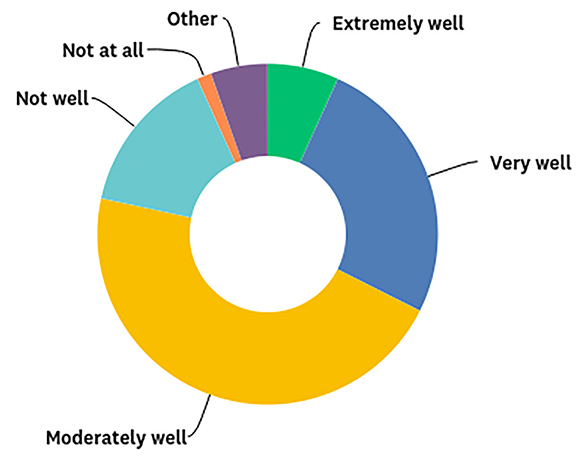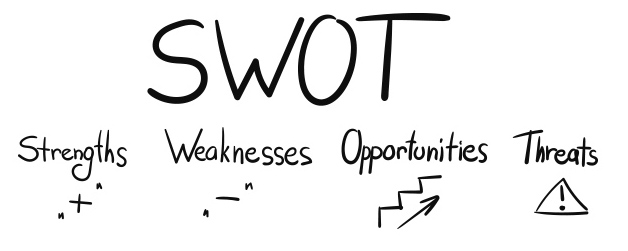
How to: Analyze your brand and position yourself for long-term marketing success
An army is bushwhacking its way through a dense tropical forest when one of the soldiers decides to climb to the top of a nearby tree to get a better lay of the land. From his perch high above the forest floor, he quickly realizes that they’re heading in the wrong direction. When he calls out to alert his fellow soldiers they angrily shout back, “shut up, we’re making progress!”
At some point (whether we’ve known it or not) we’ve all been the dutiful soldier, head down, machete in hand, hacking away at some routine task without even knowing if we’re headed in the right direction.
In the marketing world this kind of mistake could mean blindly creating a new ad, randomly sketching out some “new and improved” logo or simply slapping another page on the company website.
To be strategic, though, it is critically important that every organization take a step back from time to time to survey its current situation and—if necessary—adjust its course.
And, to do it right, we recommend starting with a thorough brand audit/SWOT analysis.
Here’s what that entails.
Components of a brand audit/SWOT analysis
Conducting a truly comprehensive brand audit/SWOT analysis isn’t a quick process. In our experience, doing a project like this (and doing it right) could take a couple of months to complete and result in a 100-plus page report filled with charts, diagrams and appendices.
But don’t let that put you off. This isn’t a case of paralysis by analysis. This is a head-to-toe physical that will ensure that your organization is functioning at the highest possible level.
Here are the components we believe any good report should include.
- An in-depth background study
This section should include a breakdown of both your primary target audiences and well as those of your competitors.
And, speaking of the competition, this is a great time to also do a deep dive into all of your main competitors’ communication materials to get a feel for how they are positioning themselves as well as their unique selling propositions. Having a firm understanding of the competitive environment will become critical when you get to the SWOT analysis portion of the project.

- An examination of current brand perspectives
Do the perceptions you have of your yourself match the perceptions others have of you? (Hint: If not, your brand is on shaky ground.)
To find out, you need to do your research—literally.
We recommend a combination of online surveys (if applicable, based on your audience) and one-on-one interviews with a wide variety of audiences in order to develop a clear, well-rounded picture of your current brand reputation.
Start the process off by getting the opinions of your internal audiences—your employees, board members and shareholders—and from there, get the input of existing and potential customers as well as any impartial industry experts.
- A thorough communication audit
You already did it with your competitors, now it’s time to turn the magnifying glass on yourself.
Go through each and every form of communication you put out into the world—from how you answer your phones to your employee uniforms and your glossy brochures and company website.
What are you communicating? Is it the right message? How consistent are you? Are you even targeting the right audiences?
Provide an analysis of each piece identifying what works and any recommendations you have on how it could be improved.

- A detailed SWOT analysis
After you’ve gathered all of your information, it’s time to lay it all on the table and start looking for any trends that may begin to appear.
As you review this information, ask yourself, what are our strengths? What is it that makes us unique and gives us a competitive advantage?
What are our weaknesses?
Are there any opportunities for us to strengthen our brand, improve our message or reach new audiences?
And last, but not least, what threats are on the horizon? Are there significant changes coming in the industry? What does the future look like for our target audience? Are we at risk of losing our competitive advantage?
- All of the rough data
At the end of the report, we recommend including all of the results of your surveys as well as the verbatims of any one-on-one interviews you conducted. Doing so will allow other stakeholders the opportunity to make their own conclusions. What might have been a routine answer to a question on a survey for one person may provide some piece of great insight to another.
Conclusion
While it may require the expenditure of some financial resources—and a bit of time—conducting a thorough brand audit/SWOT analysis is one of the wisest investments you can make in the future of your organization. In doing so, you will be able to go on to develop an effective communication plan that will result in a strong and long-lasting brand.
If you would like to learn more about past brand audits/SWOT analyses we have done for clients or see how we can help you, contact us today.